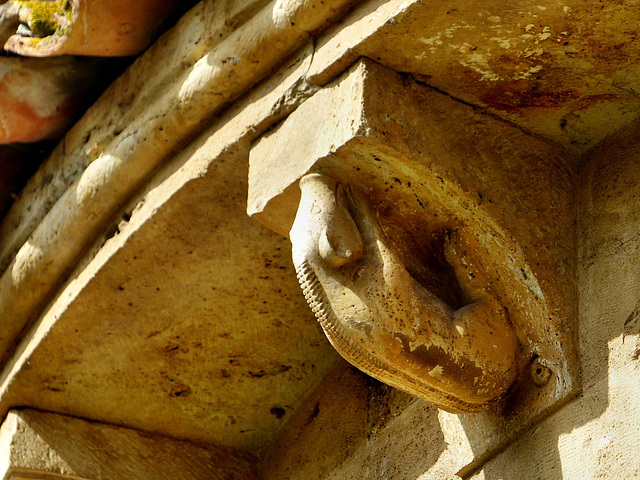San Quirico d'Orcia - Santi Quirico e Giulitta
San Quirico d'Orcia - Santi Quirico e Giulitta
San Quirico d'Orcia - Santi Quirico e Giulitta
San Quirico d'Orcia - Santi Quirico e Giulitta
San Quirico d'Orcia - Santi Quirico e Giulitta
San Quirico d'Orcia - Santi Quirico e Giulitta
San Quirico d'Orcia - Santi Quirico e Giulitta
Pienza - Pieve di Corsignano
Pienza - Pieve di Corsignano
Pienza - Pieve di Corsignano
Pienza - Pieve di Corsignano
Pienza - Pieve di Corsignano
Pienza - Pieve di Corsignano
Pienza - Pieve di Corsignano
Arezzo - Santa Maria della Pieve
Arezzo - Santa Maria della Pieve
Arezzo - Early morning fog
Arezzo - Santa Maria della Pieve
Arezzo - Santa Maria della Pieve
Arezzo - Santa Maria della Pieve
Arezzo - Santa Maria della Pieve
Arezzo - Santa Maria della Pieve
Arezzo - Santa Maria della Pieve
Montalcino - Abbazia di Sant'Antimo
Montalcino - Abbazia di Sant'Antimo
Montalcino - Abbazia di Sant'Antimo
Montalcino - Abbazia di Sant'Antimo
Montalcino - Abbazia di Sant'Antimo
Montalcino - Abbazia di Sant'Antimo
Montalcino - Abbazia di Sant'Antimo
Montalcino - Abbazia di Sant'Antimo
Montalcino - Abbazia di Sant'Antimo
Montalcino - Abbazia di Sant'Antimo
Montalcino - Abbazia di Sant'Antimo
Montalcino - Abbazia di Sant'Antimo
Montalcino - Abbazia di Sant'Antimo
Montalcino - Abbazia di Sant'Antimo
Montalcino - Abbazia di Sant'Antimo
Montalcino - Abbazia di Sant'Antimo
Montalcino - Abbazia di Sant'Antimo
Montalcino - Abbadia Ardenga
Montalcino - Abbadia Ardenga
Montalcino - Abbadia Ardenga
Siena - Duomo di Siena
Siena - Duomo di Siena
Location
Lat, Lng:
You can copy the above to your favourite mapping app.
Address: unknown
You can copy the above to your favourite mapping app.
Address: unknown
See also...
Keywords
Authorizations, license
-
Visible by: Everyone -
All rights reserved
-
202 visits
Montalcino - Abbazia di Sant'Antimo


It is proven, that the Abbazia di Sant'Antimo existed since Carolingian times. Legends (of course) know, that it was Charlemagne himself, who founded the abbey when he had left Rome, following the Via Francigana northward. The earliest document relating to the abbey is a land grant of Charlemagne´s son Louis the Pious from 813.
One year after the 1117 Verona earthquake, that destroyed so many buildings in Northern Italy, the erection of the church of today started. At that time the a powerful abbey was one of the largest landowners in the area.
The decline started in 1212, when, after a decade of hostility, an agreement stated that the abbey had to hand over a quarter of its territories to Siena, including Montalcino.
With the rise of the Dominican and the Franciscan Order, the Benedictines lost more influence. In 1462 Pope Pius II surpressed the abbey (just like Abbadia Ardenga, see previous uploads), annexed what ever was left - and handed it over to the Bishop of of Montalcino-Pienza, who was Pius' nephew.
The church is about 43 metres long. The church is often compared to Saint-Étienne in Vignory (consecrated ~ 1050 /Burgundy /~ 1000 kms northwest). The influence of French architects and artists, maybe connected to Cluny, is undisputed.
Wild boars are still today very common in Tuscany and so "Pappardelle Cinghiale" (= ribbon pasta with a sauce of wild boar stewed in tomatoes) is a kind of national dish here.
This boar from stone is under the roof of the apse.
One year after the 1117 Verona earthquake, that destroyed so many buildings in Northern Italy, the erection of the church of today started. At that time the a powerful abbey was one of the largest landowners in the area.
The decline started in 1212, when, after a decade of hostility, an agreement stated that the abbey had to hand over a quarter of its territories to Siena, including Montalcino.
With the rise of the Dominican and the Franciscan Order, the Benedictines lost more influence. In 1462 Pope Pius II surpressed the abbey (just like Abbadia Ardenga, see previous uploads), annexed what ever was left - and handed it over to the Bishop of of Montalcino-Pienza, who was Pius' nephew.
The church is about 43 metres long. The church is often compared to Saint-Étienne in Vignory (consecrated ~ 1050 /Burgundy /~ 1000 kms northwest). The influence of French architects and artists, maybe connected to Cluny, is undisputed.
Wild boars are still today very common in Tuscany and so "Pappardelle Cinghiale" (= ribbon pasta with a sauce of wild boar stewed in tomatoes) is a kind of national dish here.
This boar from stone is under the roof of the apse.
- Keyboard shortcuts:
Jump to top
RSS feed- Latest comments - Subscribe to the comment feeds of this photo
- ipernity © 2007-2025
- Help & Contact
|
Club news
|
About ipernity
|
History |
ipernity Club & Prices |
Guide of good conduct
Donate | Group guidelines | Privacy policy | Terms of use | Statutes | In memoria -
Facebook
Twitter

Sign-in to write a comment.